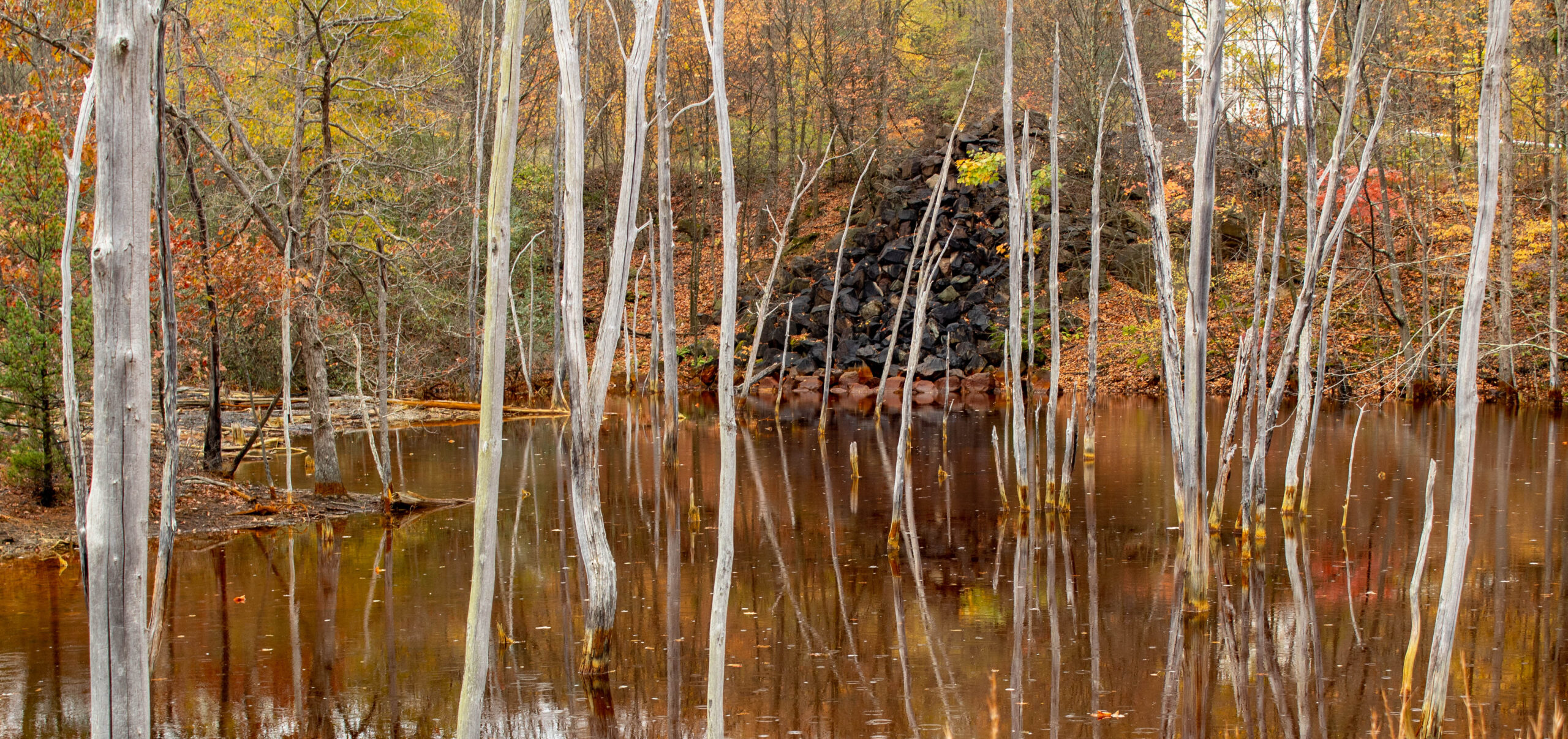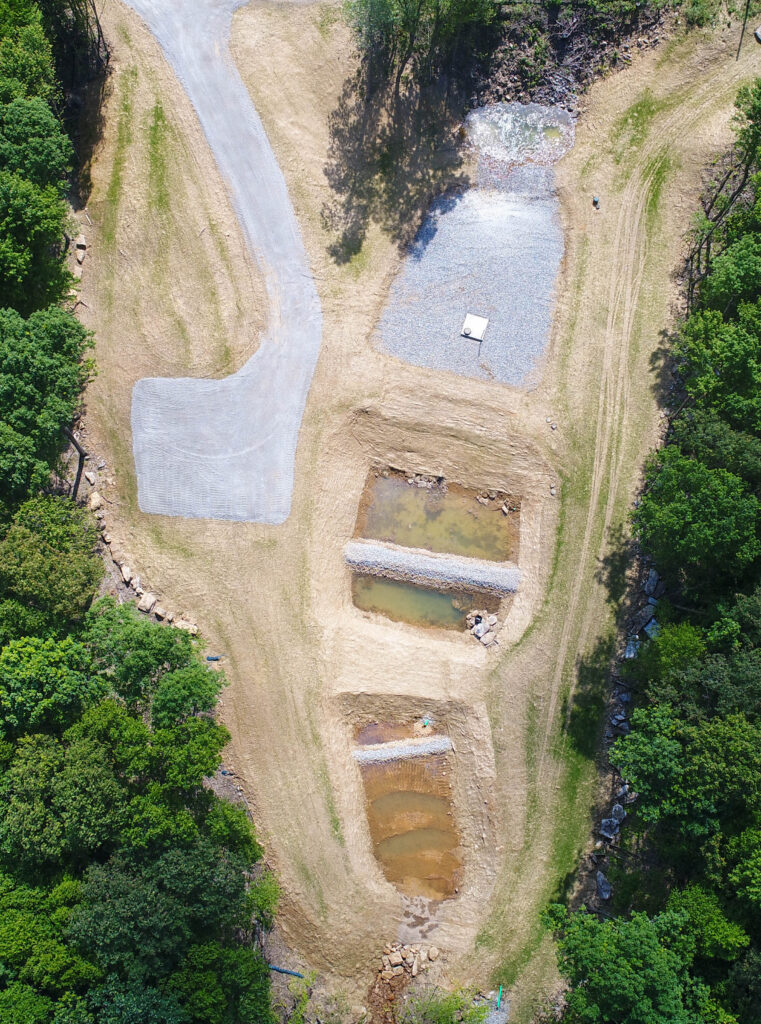Acid mine drainage (AMD) is the chief threat to water quality within the Cheat River watershed.
Many of the AMD discharges in the watershed come from abandoned mine lands, or defunct mining operations executed before the passage of the Surface Mining and Reclamation Control Act in 1977.
Prior to 1977, it was a common practice for a mining operation to simply abandon a mine once the coal was extracted. There are hundreds of abandoned mine seeps in the Cheat River watershed.
Water draining from coal mines is acidic and contains dissolved metals such as iron, aluminum, and manganese. Aquatic life, including insects and fish, are often unable to survive in streams receiving AMD from mined lands.
As a result, many miles of streams within the Cheat River watershed are void of stream life due to the legacy of over a century of coal mining.

What is acid mine drainage (AMD)?
Acid mine drainage (AMD) occurs when water, oxygen, and bacteria come into contact with pyrite, a sulfide mineral present in coal seams.


Since 1995, FOC and its partners have implemented 20 AMD treatment systems on private and abandoned mine lands. These projects require the volunteer participation of landowners, and some systems are 10 acres or more in size.
Most of these projects use passive treatment technologies that take advantage of naturally-occurring chemical and biological processes which do not require the continuous addition of chemicals.
Passive treatment systems often include open limestone channels, limestone leach beds, settling ponds and constructed wetlands.

